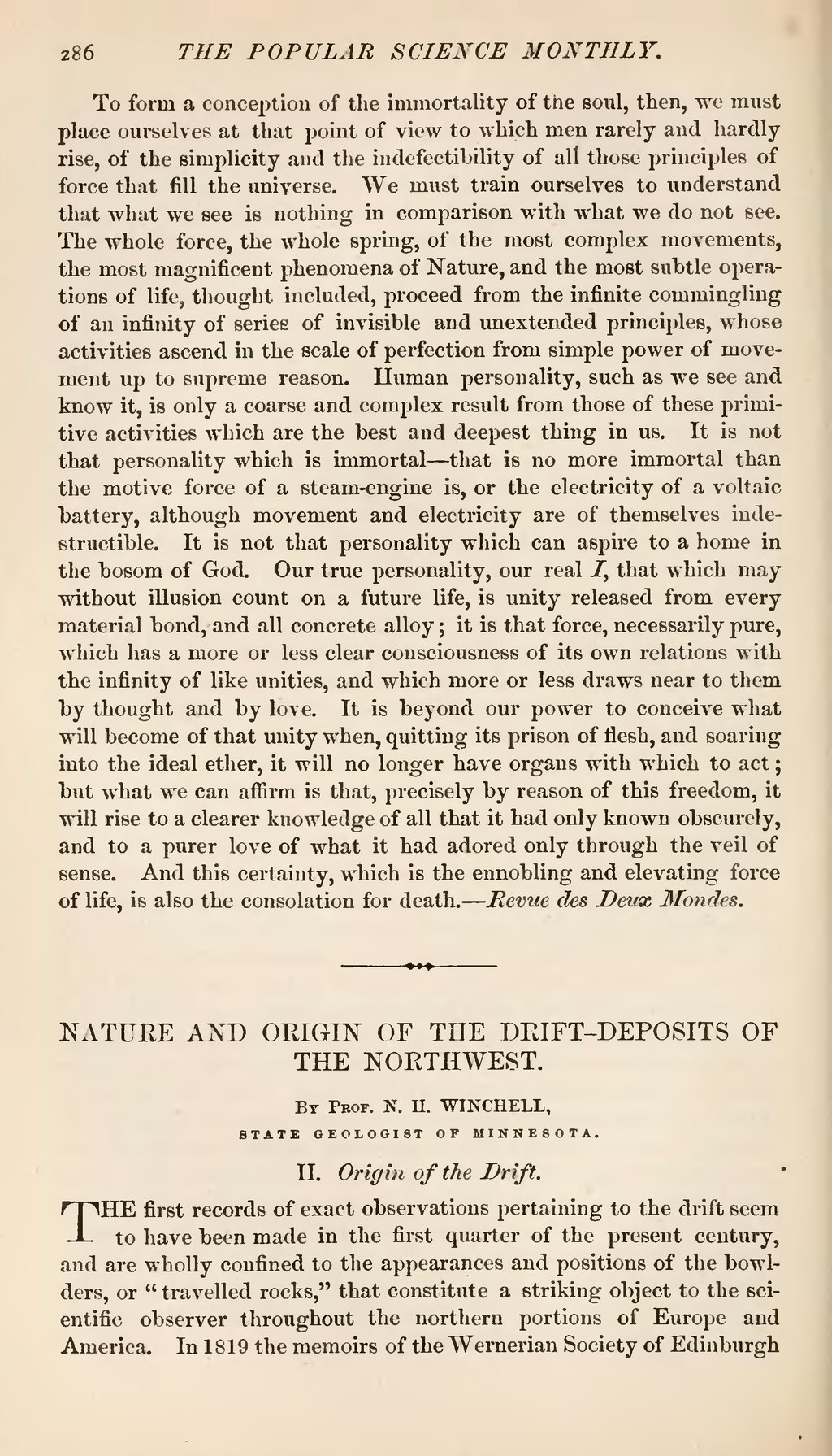To form a conception of the immortality of the soul, then, we must place ourselves at that point of view to which men rarely and hardly rise, of the simplicity and the indefectibility of all those principles of force that fill the universe. We must train ourselves to understand that what we see is nothing in comparison with what we do not see. The whole force, the whole spring, of the most complex movements, the most magnificent phenomena of Nature, and the most subtle operations of life, thought included, proceed from the infinite commingling of an infinity of series of invisible and unextended principles, whose activities ascend in the scale of perfection from simple power of movement up to supreme reason. Human personality, such as we see and know it, is only a coarse and complex result from those of these primitive activities which are the best and deepest thing in us. It is not that personality which is immortal––that is no more immortal than the motive force of a steam-engine is, or the electricity of a voltaic battery, although movement and electricity are of themselves indestructible. It is not that personality which can aspire to a home in the bosom of God. Our true personality, our real I, that which may without illusion count on a future life, is unity released from every material bond, and all concrete alloy; it is that force, necessarily pure, which has a more or less clear consciousness of its own relations with the infinity of like unities, and which more or less draws near to them by thought and by love. It is beyond our power to conceive what will become of that unity when, quitting its prison of flesh, and soaring into the ideal ether, it will no longer have organs with which to act; but what we can affirm is that, precisely by reason of this freedom, it will rise to a clearer knowledge of all that it had only known obscurely, and to a purer love of what it had adored only through the veil of sense. And this certainty, which is the ennobling and elevating force of life, is also the consolation for death.—Revue des Deux Mondes.
| NATURE AND ORIGIN OF THE DRIFT-DEPOSITS OF THE NORTHWEST. |
By Prof. N. H. WINCHELL
STATE GEOLOGIST OF MINNESOTA.
II. Origin of the Drift.
THE first records of exact observations pertaining to the drift seem to have been made in the first quarter of the present century, and are wholly confined to the appearances and positions of the bowlders, or "travelled rocks," that constitute a striking object to the scientific observer throughout the northern portions of Europe and America. In 1819 the memoirs of the Wernerian Society of Edinburgh
